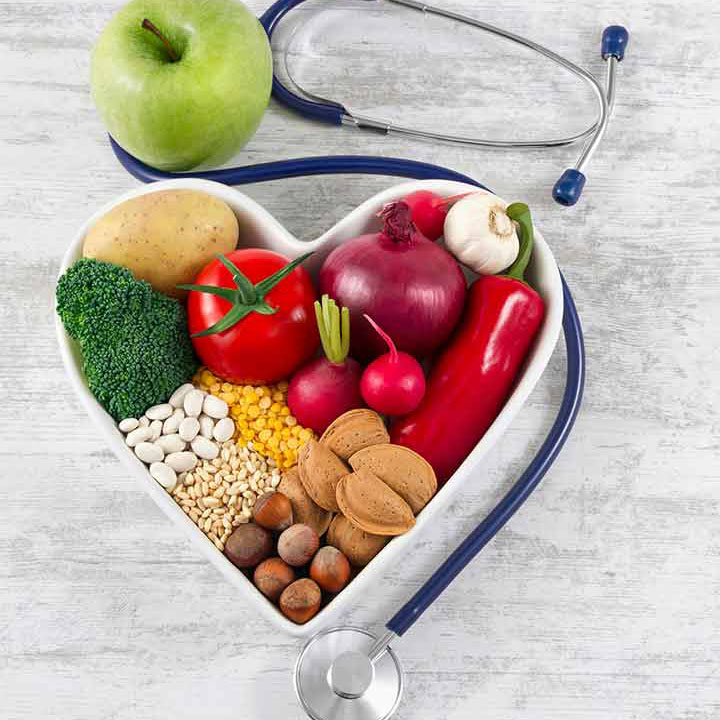Essential Healthy Cooking & Eating Tips
Adopting a healthy lifestyle often starts right in the heart of our homes: the kitchen. Preparing your meals using the proper techniques can not only improve your health but also enhance the flavors of your food. Here, we’re sharing our top 10 essential healthy cooking tips, all designed to assist you in creating nutritious, delectable dishes.
Opt for Fresh Ingredients
The first tip in healthy cooking is choosing fresh, unprocessed ingredients over their canned or frozen counterparts. Fresh fruits, vegetables, and lean meats have more nutrients and fewer added preservatives or sugars. When shopping, consider local farmer’s markets, as they often have an abundance of fresh, seasonal produce.
Embrace Whole Grains
Incorporating whole grains into your meals is a fantastic way to increase fiber intake and improve digestive health. Instead of processed white bread, rice, or pasta, opt for whole-grain versions like brown rice, whole wheat pasta, and quinoa.
Reduce Salt Intake
High sodium intake can contribute to hypertension and other health issues. Rather than seasoning your meals with high-sodium products, use herbs and spices for flavor. Ingredients like garlic, turmeric, and cumin pack a lot of flavor without the added salt.
Choose Healthy Cooking Methods
The method of cooking can significantly affect the nutritional value of your meal. Grilling, steaming, poaching, and roasting are all healthier cooking methods, as they require little to no added fats and help retain nutrients better than frying or sautéing.
Use Healthy Fats
All fats are not created equal. Replace saturated and trans fats with healthier alternatives like olive, avocado, or canola oil. These fats improve heart health and add unique flavors to your dishes.
Control Your Portion Sizes
Even the healthiest food can lead to weight gain if eaten in excess. Ensure you’re consuming appropriate portion sizes to maintain a balanced diet. Utilize measuring cups and scales to ensure you’re not overeating.
Hydrate Smartly
Swap sugary drinks with water, herbal teas, or infused water for better hydration. Keeping well-hydrated aids in digestion and helps maintain optimal body functioning.
Include a Variety of Foods
To ensure you’re getting a range of nutrients, include a variety of fruits, vegetables, lean proteins, and whole grains in your diet. A colorful plate is often a healthy plate.
Cook in Batches
Batch cooking can help you stay on track with your healthy eating plan. By preparing meals in advance, you can control the ingredients and portion sizes and prevent the temptation of ordering unhealthy takeout on busy days.
Mindful Eating
Eating healthily isn’t just about the food you cook but also how you eat it. Practice mindful eating by taking the time to savor your food, chewing slowly, and paying attention to feelings of fullness.
Retain Vital Nutrients
Retain the vibrant colors and vital nutrients in your vegetables by opting for swift cooking methods such as steaming or stir-frying.
Opt for Health-Conscious Ingredients
Enrich your dishes with healthier elements like vinegar, tomatoes, onions, herbs (preferably fresh), and fat-free or low-fat sauces or dressings. This is particularly beneficial for those managing high blood pressure or cholesterol.
Maximize Your Freezer (and Your Time)
Cook once, but eat multiple times. By preparing larger quantities, you can freeze leftovers for future meals, providing a handy, nutritious option for those busier days. For instance, individually vacuum-seal and freeze portions of brown rice – it’ll remain fresh for several weeks.
Embrace the Smoothie Life
A smoothie is a versatile and satisfying choice. It’s simple to make, revitalizing and can feel like an indulgent treat. Keep your blender in a convenient location for regular use. Blend a banana (store them in the freezer for longevity), frozen berries or any available fruit, some juice, fat-free or low-fat yogurt, and protein powder. One delicious shake can provide 4–5 servings of fruit. Encourage your family or friends to join in on the smoothie action.
Create Your Own Spice Blends
Pre-made seasonings often contain high levels of salt, potentially increasing your risk of high blood pressure. Opt to flavor your dishes with fresh herbs, spices, or salt-free seasoning blends. Lemon juice or fresh chilis can also inject a burst of flavor.
Keep an Eye on Sodium Content
Canned, processed, and preserved vegetables tend to have high sodium levels. Aim to select “low-sodium” products whenever possible. It might require a little extra effort, but it’s worthwhile for your health.
Adopt Healthy Alternatives for Quick Breads and Muffins
Bake muffins and quick breads with reduced saturated fat and calories. Substitute 1/2 cup butter, lard, shortening, or oil with three ripe, thoroughly mashed bananas, or use one cup of applesauce instead of these fats.
Avoid Overly Processed Products
Incorporate whole grains into your meals rather than heavily processed products. Use whole-wheat flour, oatmeal, and whole cornmeal. Up to half of the all-purpose flour in a recipe can be replaced with whole-wheat flour. If a recipe asks for 2 cups of flour, try using 1 cup of all-purpose flour and 1 cup (minus 1 tablespoon) of whole-wheat flour.
Intelligent Baking Substitutions
Choose healthier baking alternatives, such as using pumpkin or silken tofu instead of butter, mashed banana instead of oil (or butter), and honey or pure vanilla extract in place of sugar.
Choose Low-Fat or Fat-Free Dairy
Opt for fat-free or 1% milk over whole or reduced-fat (2%) milk. For an added creamy texture, experiment with fat-free half-and-half or evaporated skim milk.
Cooking healthily doesn’t have to be complicated or time-consuming. By incorporating these essential healthy cooking and eating tips into your routine, you’ll be well on your way to enjoying more nutritious, satisfying meals. Remember, the journey to a healthier lifestyle is a gradual process — take one step at a time and enjoy the ride.




